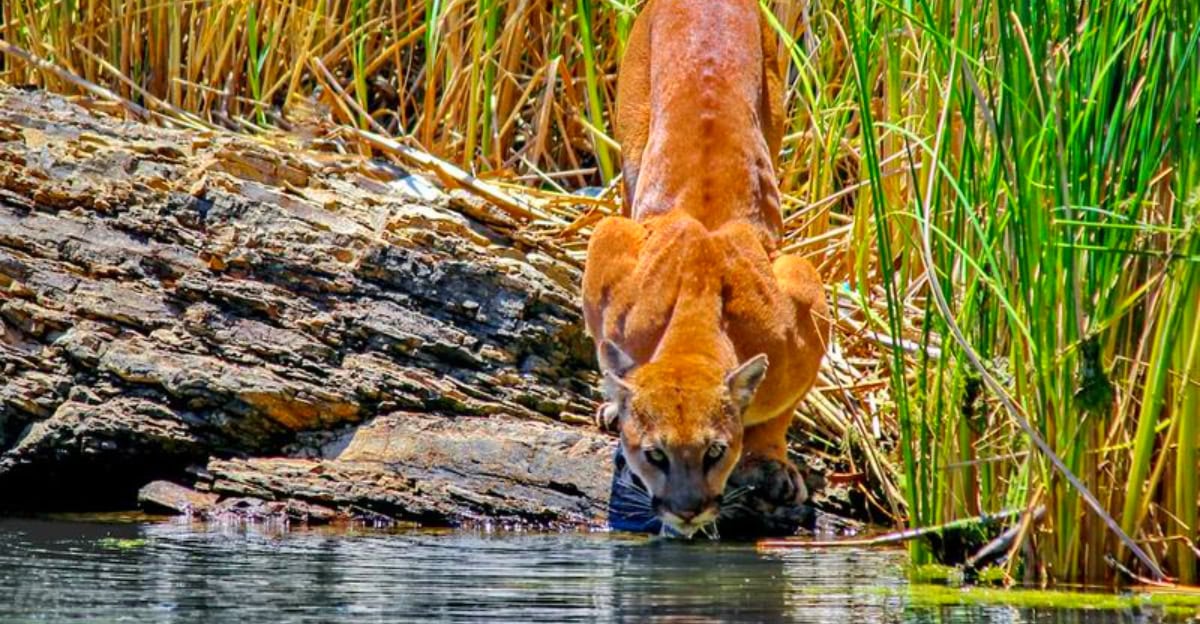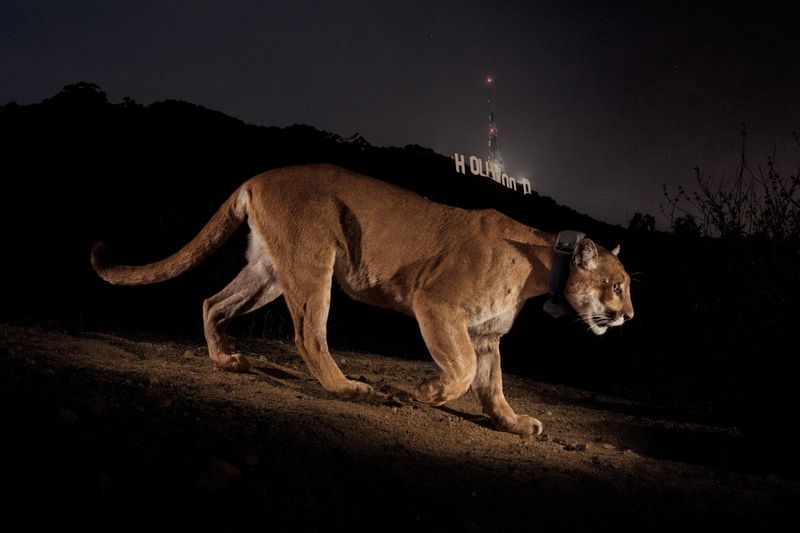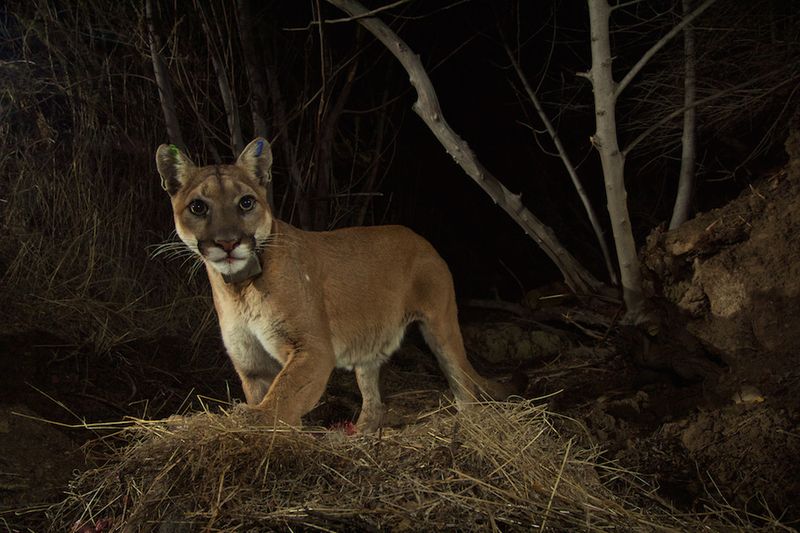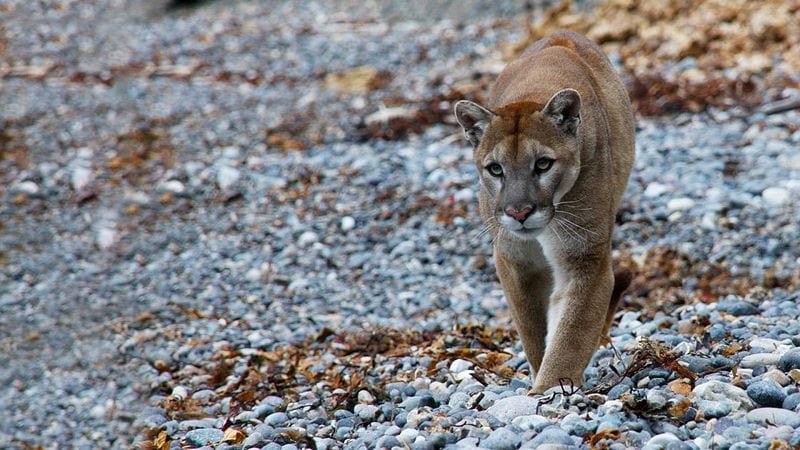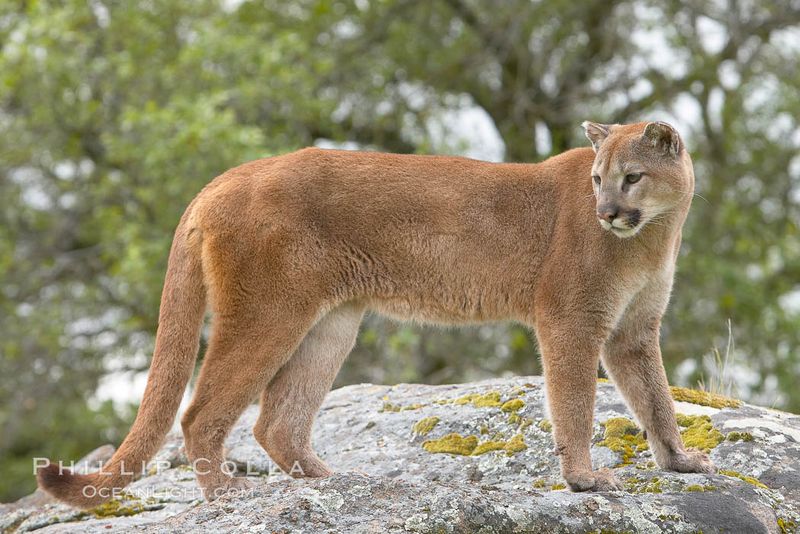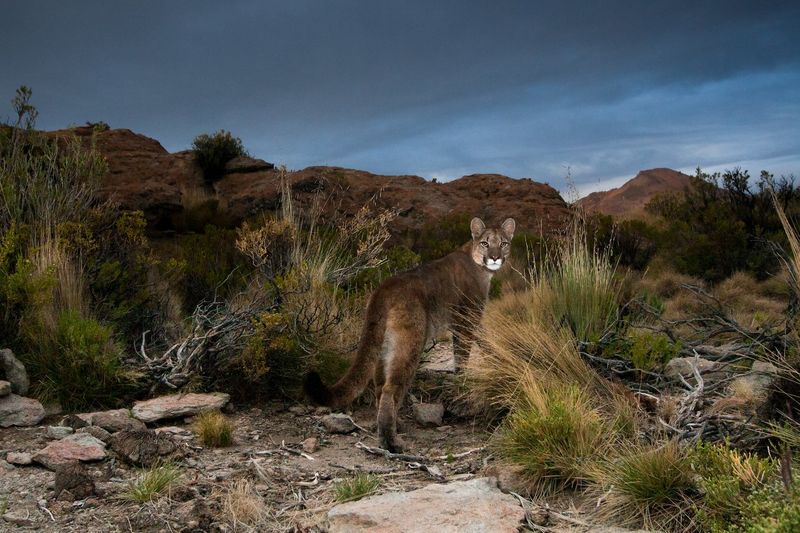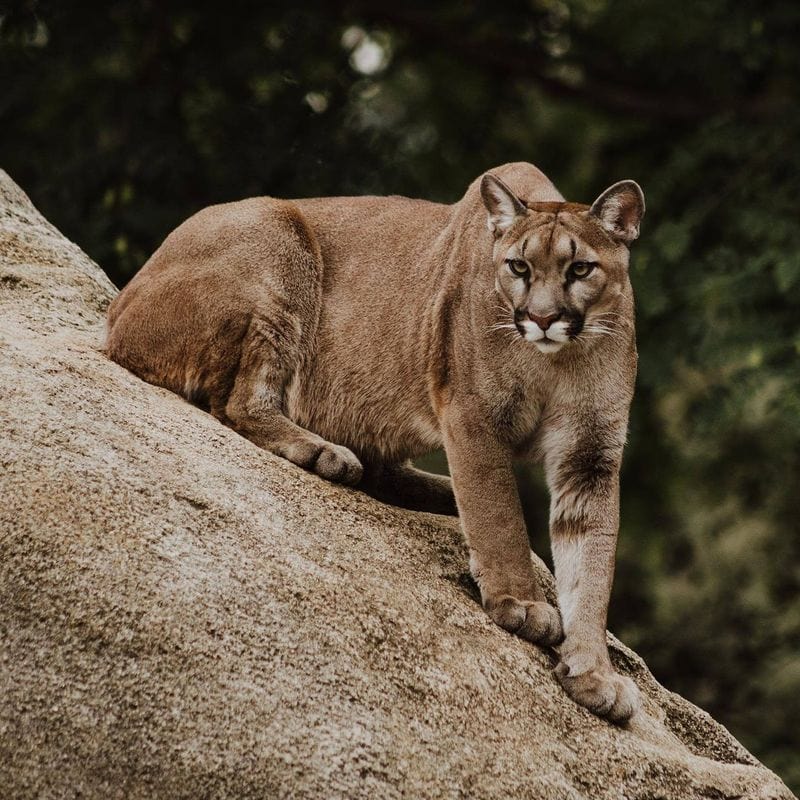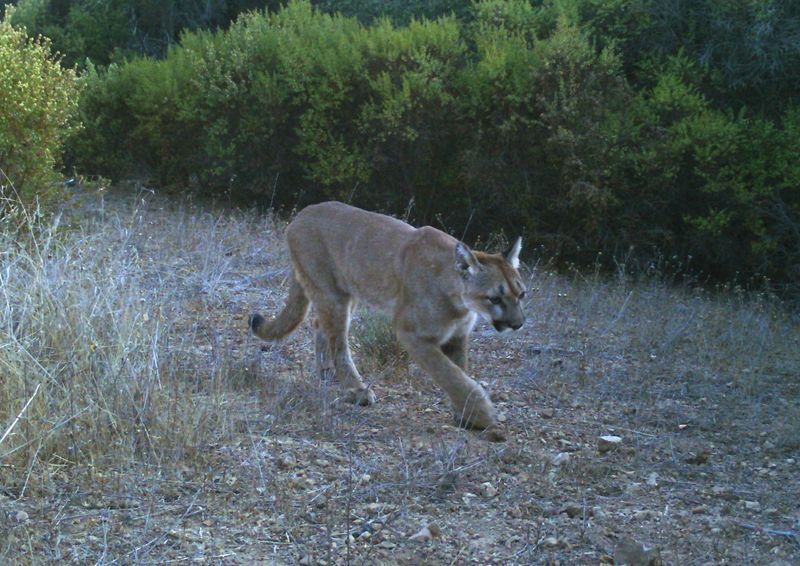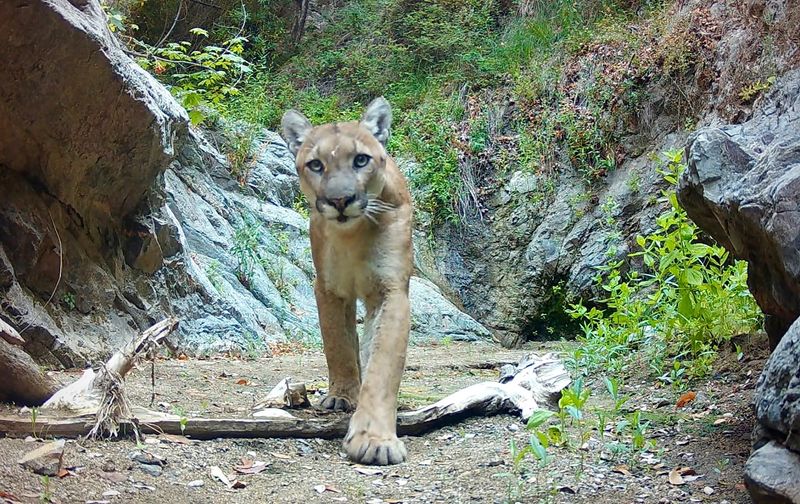California’s diverse landscape is a haven for mountain lions, offering them a mix of urban and wild environments. These majestic predators roam from bustling city parks to remote forests, leaving a mark on the landscape and capturing the imagination of locals and tourists alike. In this article, we explore ten chilling hotspots where mountain lions are known to lurk and thrive, adding a thrilling element to California’s natural allure.
1. Griffith Park – Los Angeles
Griffith Park is famously home to P-22, a mountain lion that defied the odds by taking residence in this urban oasis. Surrounded by LA’s bustling freeways, the park offers a peculiar habitat for such a top predator. Hikers often encounter paw prints or hear rustling in the dense foliage, adding an eerie thrill to their trek. At dawn and dusk, when the park is cloaked in shadows, the possibility of a mountain lion sighting becomes very real. Motion-sensor cameras frequently capture P-22 on the move, a ghostly figure that has become a local legend. Despite being nestled in a metropolis, Griffith Park’s wild heart beats strong, a reminder of nature’s persistence.
2. Santa Monica Mountains – Malibu & Topanga
In the Santa Monica Mountains, mountain lions navigate a landscape caught between urban sprawl and untamed wilderness. Researchers track these elusive cats as they move stealthily through the rugged terrain, often unseen by the many hikers who tread the trails. Sightings are common, yet each encounter feels like a brush with the unseen. The lions have adapted to the noise and lights of nearby cities, hunting silently at night and leaving only a whisper of their presence. This area is a testament to their resilience, surviving despite human encroachment. For locals, the mountain lions add an element of wild mystery to the beautiful backdrop of Malibu and Topanga.
3. Big Sur Coast – Central California
The majestic Big Sur Coast is a haven for mountain lions, offering dense forests and abundant prey. Here, the lions live among the towering redwoods and misty cliffs, an ideal environment for these apex predators. Hikers along these famous trails might feel the prickling sensation of being watched, even if the lions remain hidden. Biologists have recorded high predation rates here, noting the lions’ efficiency at hunting both deer and livestock. As the coastal fog rolls in, the landscape becomes a canvas where these cats move like shadows. Visitors often leave with stunning ocean views, unaware of the silent watchers that call Big Sur home.
4. Sierra Nevada Foothills – Auburn & Grass Valley
The Sierra Nevada Foothills, with its rolling oak woodlands, are a frequent haunt for mountain lions. Residents often find evidence of these cats in their backyards or captured on security cameras at night. The landscape, characterized by scattered ranches and quiet creeks, provides ample cover and prey. Despite the serene daytime atmosphere, the foothills belong to the lions after dark. They are bold, accustomed to human presence while retaining their wild instincts. This uneasy coexistence intrigues and unnerves locals, who share stories of unexpected encounters. It’s a place where the calm of day fades into a night filled with the unseen movements of these solitary predators.
5. San Diego’s Cuyamaca Mountains
The Cuyamaca Mountains east of San Diego are a stronghold for mountain lions, drawing hikers and wildlife enthusiasts alike. This region’s dense forests and granite ridges create a prime hunting ground for the elusive cats. Sightings are often reported along popular trails, especially at dawn when the lions are most active. The threat of being shadowed by these silent predators adds a layer of tension to any trek. Campers are advised to secure their food tightly, as lions are known to roam near campsites under cover of darkness. For those venturing into these mountains, every rustle in the brush could be the whisper of a mountain lion’s presence.
6. Yosemite National Park – Valley and Beyond
Yosemite National Park, with its breathtaking granite cliffs and serene meadows, is prime territory for mountain lions. These stealthy predators avoid the busy valley floor during the day but return to hunt as dusk falls. Tracks along the Merced River and eerie nocturnal sounds remind visitors of the park’s unseen inhabitants. Motion cameras confirm that Yosemite’s lions are thriving, adding a touch of the wild to this popular tourist spot. Standing beneath El Capitan, knowing a silent predator may be watching from the shadows, adds an exhilarating edge to the park’s natural beauty. Yosemite is a place where the majesty of the landscape is matched by the wildness of its residents.
7. Lake Tahoe Basin – California Side
The Lake Tahoe Basin, famous for its clear waters and ski resorts, is also home to prowling mountain lions. On the California side, dense pine forests and abundant deer attract these elusive predators. Winter sightings are common as food becomes scarce, and lions venture closer to human habitats. Hikers on remote trails might stumble upon fresh paw prints in the snow, a clear sign of the nearby presence. Tahoe’s lions are especially elusive, moving silently through the landscape, often unseen. The knowledge that these powerful predators share this beautiful space with humans adds a thrilling edge to the Lake Tahoe experience.
8. Mendocino National Forest – Northern California
Mendocino National Forest offers mountain lions a vast, often solitary domain where they reign as top predators. Here, they roam the ridges, preying on deer with little human interference. Sightings are rare, but signs like claw-marked trees or half-buried carcasses hint at their presence. Encountering a lion in this remote wilderness can be startlingly intimate, leaving a lasting impression. Locals share tales of glowing eyes reflecting in nighttime flashlights, only to disappear silently. In this dense forest, the lack of cell signal and isolation amplifies the primal thrill of knowing you are not alone. Mendocino is a place where the wild still holds sway.
9. Angeles National Forest – San Gabriel Mountains
Angeles National Forest, part of the San Gabriel Mountains, offers a surprising wilderness so close to Los Angeles. It’s one of the top spots for mountain lion sightings in Southern California. Popular trails like Chantry Flats often reveal fresh tracks, a thrilling reminder of the predators that roam nearby. These lions navigate a landscape of shrinking habitats, boxed in by freeways, yet their perseverance is inspiring. The proximity to urban areas makes sightings feel surreal, as if nature and city life are intertwined. For those hiking these trails, the chance encounter with a mountain lion adds both thrill and wonder, highlighting the resilience of wildlife amidst human encroachment.
10. Point Reyes National Seashore – Marin County
Point Reyes National Seashore is a striking mix of coastal beauty and mountain lion territory. The inland forests and hills provide a perfect habitat for these predators, who are occasionally spotted by locals and hikers. Unsettling cries at night and paw prints on ranch lands serve as reminders of their presence. The abundance of black-tailed deer offers a reliable food source, drawing lions close to visitor trails. With the coastal fog masking both sound and sight, these cats move almost invisibly. The blend of stunning landscapes and apex predators makes Point Reyes a place where the wild feels both alive and unpredictable, capturing the essence of untamed nature on the edge of the Pacific.
